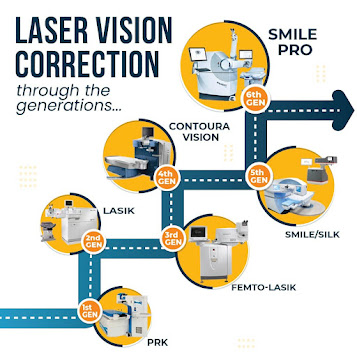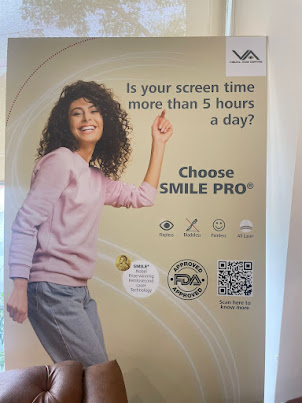Is Smile Pro Eye Surgery Safer than LASIK?
Explore the safety of SMILE Pro vs LASIK eye surgeries. Uncover if SMILE Pro's modern procedure is safer than traditional LASIK.
SMILE Pro and LASIK represent two of the most notable advancements in refractive eye surgery. LASIK, an acronym for Laser-Assisted In Situ Keratomileusis, has been a prevalent choice for vision correction since the 1990s. This procedure involves creating a thin flap in the cornea, reshaping the tissue underneath with a laser, and then repositioning the flap.
On the other hand, SMILE Pro, standing for Small Incision Lenticule Extraction, is a relatively recent development. It offers a less invasive alternative, where a lenticule is created and extracted through a small incision, hence eliminating the need for a flap. Both procedures have the same goal: to correct refractive errors and reduce dependency on glasses or contact lenses. However, their differences in techniques influence their safety profiles.
LASIK: A Proven Track Record
LASIK has been around for over three decades and has been performed on millions of patients worldwide. It is considered a highly safe and effective procedure, with success rates exceeding 95%. During LASIK, a thin flap is created on the cornea, and an excimer laser is used to reshape the underlying corneal tissue. The flap is then repositioned to heal naturally.
SMILE Pro: A Minimally Invasive Approach
SMILE Pro is a newer procedure introduced in 2011 and is gaining popularity due to its minimally invasive nature. Unlike LASIK, which creates a flap, SMILE Pro uses a single incision to create and extract a lenticule of corneal tissue, reshaping the cornea without disturbing the outer corneal layers.
Why is SMILE Pro Safer than LASIK?
SMILE Pro, despite being a newer entrant in the world of vision correction surgeries, boasts several safety advantages over LASIK. Here are the key reasons:
- Less Invasive: SMILE Pro is a minimally invasive procedure that reduces the overall risk. Since it only requires a small incision in the cornea, there's less disturbance to the eye's structure, reducing the chances of complications.
- Preservation of Corneal Strength: SMILE Pro leaves a majority of the outer corneal layers undisturbed. This approach helps maintain the cornea's natural strength, reducing the risk of ectasia, a condition where the cornea weakens and bulges outward.
- Lower Risk of Dry Eye: LASIK can lead to dry eye syndrome due to the cutting of corneal nerves during flap creation. SMILE Pro, with its flapless approach, significantly reduces dry eye symptoms post-surgery.
- Reduced Corneal Flap Complications: Since SMILE Pro is a flapless technique, it eliminates any flap-related complications. These can include flap displacement or wrinkles, which are risks associated with LASIK.
- Less Dependence on Skill: The accuracy of LASIK heavily depends on the surgeon's skill, particularly during the flap creation step. In contrast, SMILE Pro uses a high-precision laser, reducing the dependence on the surgeon's skill and the possibility of human error.
- Corneal Haze: There are fewer reported cases of corneal haze or cloudiness post-surgery with SMILE Pro compared to LASIK.
- No Microkeratome Usage: LASIK sometimes uses a microkeratome, a surgical instrument, to create the corneal flap. This instrument can sometimes lead to complications. However, SMILE Pro does not require a microkeratome, thus avoiding these complications.
- Robotic and AI-based: SMILE Pro is performed using a robotic system, further reducing the risk of human error and increasing precision.
- Suitable for a wider range of patients: SMILE Pro can be a good option for individuals with thin corneas or those who are particularly concerned about the risk of flap-related complications. LASIK may be more suitable for individuals with thicker corneas or those who prefer a procedure with a longer track record.
Factors to Consider When Choosing Between SMILE Pro and LASIK
The choice between SMILE Pro and LASIK depends on individual factors, such as:
- Corneal Thickness: SMILE Pro may be a better option for individuals with thin corneas, as it preserves more corneal tissue.
- Dry Eye Concerns: SMILE Pro may be a better option for individuals prone to dry eye, as it reduces the risk of post-operative dry eye symptoms.
- Personal Preferences: Some individuals may prefer the minimally invasive nature of SMILE Pro, while others may prefer LASIK's longer track record.
SMILE Pro offers a safer, less invasive alternative to traditional LASIK. It reduces complications associated with corneal flaps and dry eye and preserves more of the cornea's natural strength. However, patient suitability for each procedure can vary, and it's essential to consult with an experienced ophthalmologist to understand which procedure is best for your specific needs.




Comments
Post a Comment